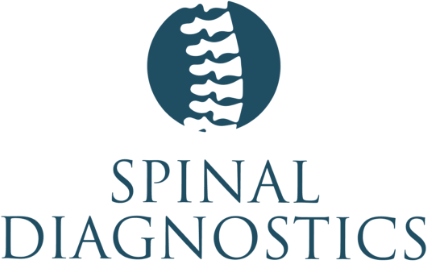Leg pain can be experienced due to multiple factors, such as muscle or ligament strains, nerve compression, vascular condition, or correlated medical conditions like arthritis or neuropathy. It may manifest as sharp sensations, aches, or cramps.
Leg pain can severely impact mobility and daily activities like walking and climbing stairs. This interferes with your quality of life, hindering work, hobbies, and sleep due to chronic pain.
Getting prompt interventional treatment is crucial to managing the root cause of leg pain. Conservative treatments like physical therapy, non-narcotic medication, and minimally invasive interventions can help deal with joint-related causes of leg pain.
Leg pain may be caused due to multiple causes, including wearing due to age and physical activity, or due to external factors like inflammatory conditions.
- Musculoskeletal causes: Physical trauma to the leg muscles, tendons, and ligaments can cause leg pain. Besides, conditions like arthritis or degenerative disc disease may affect the joints in the leg.
- Inflammatory causes: Conditions like bursitis, tendonitis, or myositis, can cause the inflammation of tendons and ligaments in the leg.
- Vascular causes: Some conditions like peripheral artery disease or deep vein thrombosis can cause the blockage of arteries and veins, cutting the blood supply to the leg.
- Neuropathic causes: The nerves in the leg can suffer from irritation or compression due to multiple diseases such as peripheral neuropathy, sciatica, or complex regional pain syndrome.
Leg pain may be associated with any of the following conditions.
Cervical facet joint arthritis is a degenerative condition that wears down the joints in the cervical spine around the neck. Cartilage deterioration caused by the friction of bones rubbing against each other can result in symptoms like stiffness, pain, and headaches.
As the condition worsens, it could irritate the sciatic nerves in the spinal cord, which connect to the nervous system in the legs, which is in charge of movement and sensitivity.
Degenerative disc disease occurs when the intervertebral discs in charge of absorbing shock and adding flexibility to the spine wear down due to age and physical activity. When this happens, the area available for the spinal nerves within the spinal cord reduces, leading to pain and discomfort in the lumbar area, neck, and legs.
Peripheral neuropathy refers to the dysfunction of the peripheral nerves located throughout the spinal cord that innervates the legs and is connected to the brain. This damage can affect the control of sensation and mobility.
Sciatica happens when the nerves in the lower back area extending into the legs become irritated or damaged. This nerve can become compressed due to multiple conditions, like a herniated disc, spinal stenosis, degenerative disc disease, or physical injuries. When this happens, it can cause severe pain, numbness in the legs, and weakness.
Complex regional pain syndrome (CRPS) is a chronic condition that causes severe pain in the body. It may appear in the legs but can spread into other parts of the body as the condition worsens.
Since leg pain can be caused by multiple factors, the best treatment option will depend on the degree of pain and its correlated condition.
Minimally invasive interventions offer alternative treatments for leg pain. Compared to traditional surgery, these procedures offer smaller incisions, minimal risk of complications, and a faster return to regular activities.
Minimally invasive lumbar decompression (MILD) is designed to treat spinal stenosis, which could be responsible for nerve decompression around the legs. It aims to relieve pressure on the spinal nerves by removing a small portion of bone or tissue through a small incision.
Pain management procedures aim to reduce pain by using techniques that interfere with the nerve signals sent to the brain. Some of the most common pain management procedures to treat leg pain include:
- Radiofrequency ablation uses heat from radio waves to help reduce nerve irritation.
- Facet joint injections are targeted into the joints located on the vertebra, which could be causing nerve compression.
- Peripheral nerve blocks involve injecting anesthetic near the peripheral nerves to block pain transmission.
Neuromodulation focuses on stimulating the nerves responsible for the pain signals sent to the brain, reducing the discomfort. For example, spinal cord stimulation uses electrical impulses to modify the nerve activity in the spine, stopping pain from being felt.
Epidural steroid injections help provide quick inflammation reduction and leg pain symptom relief. They target the nerves that send pain signals into the brain, almost instantly blocking them, providing temporary relief from pain.
Unlike surgical procedures, injections reduce the risk of complications and recovery time.
Non-opioid medications avoid the usage of opioids to help alleviate pain symptoms. They reduce the risk of developing an addiction and are a lot more gentle to the body. Some of the best non-narcotic medication options for leg pain include:
- Nonsteroidal anti-inflammatory drugs
- Topical analgesics
- Anticonvulsants
- Antidepressants
- Muscle relaxants
Using physical therapy and exercises can help alleviate leg pain symptoms significantly. Some alternative conservative treatments may include massage therapy, acupuncture, and chiropractic care.
These can be used along with other minimally invasive treatment options or non-narcotic medication. Also, multiple lifestyle changes may significantly reduce pain. These may include performing low-impact exercises, keeping a healthy weight, using ergonomic chairs, and having good posture when sitting down.
At Spinal Diagnostics, we focus on spinal and neuropathic pain management. Our team of specialists are recognized leaders in clinical research and offer updated diagnostic processes and treatment options.
We have dedicated our practice to improving our patient’s quality of life without using opiate medications or traditional spine surgery. Over ten years of experience makes us the top choice for those dealing with back and neck pain.
If you want to learn more about our services, call us, schedule an appointment online, or visit our locations in Tualatin and Newberg in Oregon.





